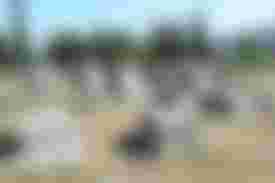Stećak tombstones - medieval tombstones
Stećak tombstones are medieval monolithic stone monuments related to the entire area of today's Bosnia and Herzegovina, and parts of Serbia, Montenegro and Croatia.

Based on the available data, it can be claimed that they appear from the second half of the 12th century. century, that their first phase lasts through the XIII. century, to be intensively carved and decorated in the XIV. and XV. century. In the 16th century, this type of art gradually disappeared.

Out of 70,000 registered stećak tombstones at 3,300 sites, there are about 60,000 in Bosnia and Herzegovina, 4,400 in Croatia, about 3,500 in Montenegro and about 4,100 in Serbia. The basic groups of stećak tombstones are laid and upright stone monoliths.

In terms of representation, the most numerous group consists of boxes, followed by slabs, and the smallest number is gabled. The laid monuments represent the primary form of stećak tombstones and are represented in the entire area of their distribution. Among the upright stone monoliths, the following types are distinguished: stela, pillar (obelisk), crusader and nišan.
Among the decorative motifs on the stećak tombstones, in addition to their pronounced symbolism characteristic of medieval art, secular, religious symbols and other ornaments that intertwine and complement each other can be distinguished.

In general, the ornamentation of stećak tombstones reveals the perceptions and feelings of an entire epoch, both the people who participated in their construction and the deceased who found their last destinations there, according to whose wishes - as some inscriptions say - stećak tombstones and carved.
According to the testimony of the inscription, there are the following names, which overlap and are used in parallel to mark the stećak tombstones: "bilig", "kâm (stone)", "zlamen", "kuća" and "vječni dom". The names rooted in the people are: "marble", "masheti" "Greek graves", "old tombs", "Kaur cemetery", "giant stones".
The most commonly used name in the literature is the stećak, whose name comes from its main purpose to "stand" above the grave as a monument. It is the present participle of the verb to stand - standing or, as it was previously said, "to acquire".
The basic groups of stećak tombstones are laid and upright stone monoliths. Among the upright stone monoliths, the following variants can be distinguished: stela, pillar (obelisk), cross and nišan. Monuments of this type are mostly found in northeastern Bosnia (around Srebrenica and Zvornik), while in other parts of Bosnia and Herzegovina they appear singly. The largest number of stećak tombstones belong to the type of laid monoliths, which appear in three forms: slab, chest and sarcophagus (gabled).
About 40,000 chests, 13,000 slabs, 5,500 gables, 2,500 pillars, 300 crosses and amorphous forms of about 300 were recorded among the individual forms. Over 5,000 specimens of decorated stećak tombstones or reliefs with relief were recorded.

According to the number of stećak tombstones, the first place is occupied by the municipalities of Nevesinje and Konjic with 3000 to 4000 specimens. Nominated necropolises with stećak tombstones are national monuments of Bosnia and Herzegovina and enjoy the highest degree of legal protection provided by decisions to designate them as national monuments.

A system has been established to coordinate the development of a management plan headed by the Commission to Preserve National Monuments, the Ministry of Civil Affairs and the Commission for Cooperation of BiH with UNESCO, as well as the competent entity ministries of culture and cultural heritage institutes. The principle of active participation (participatory approach) of government institutions responsible for heritage management and municipalities in whose territories there are nominated necropolises with stećak tombstones was applied in the development of the management plan.





